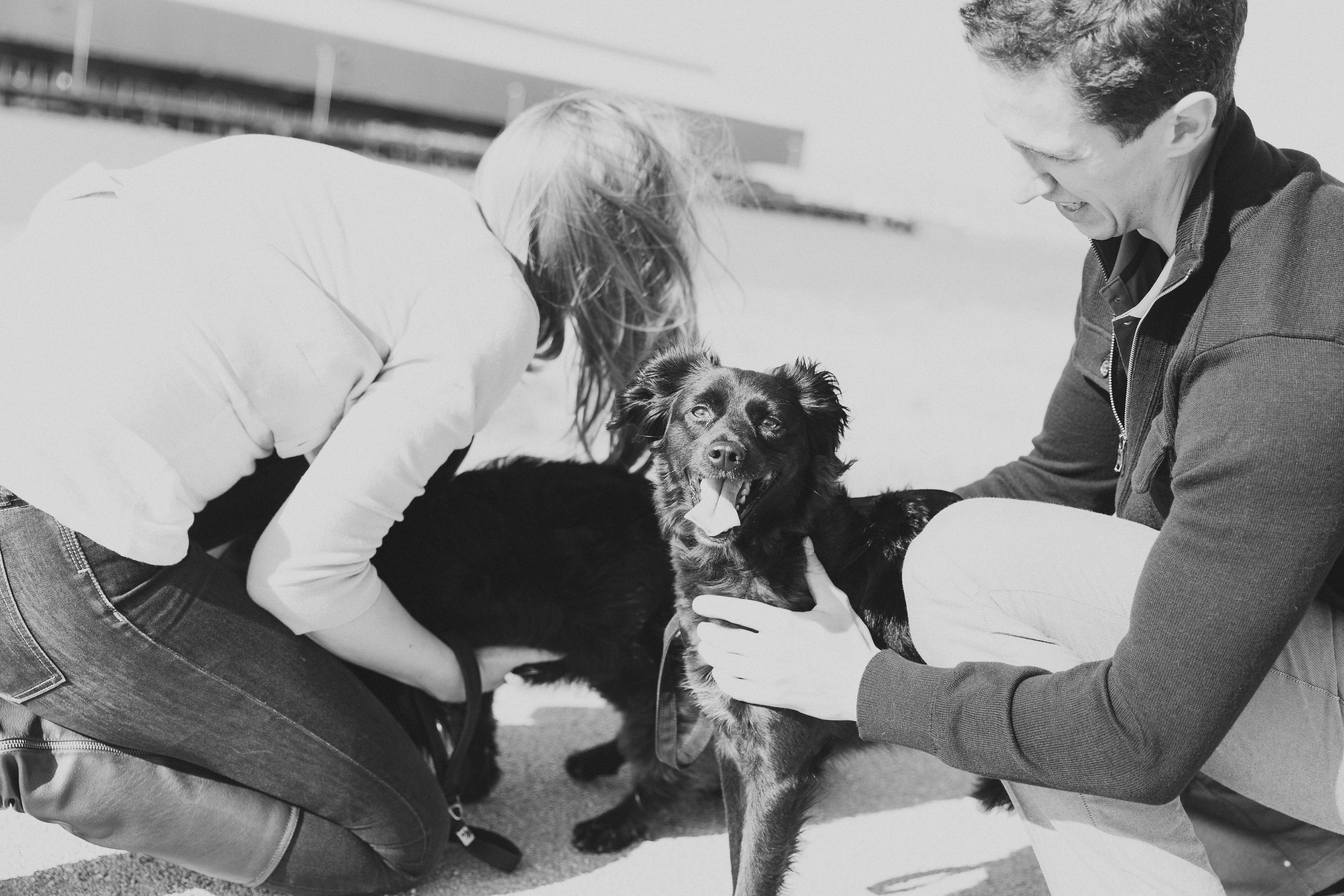Ever since Colby had surgery to remove a mast cell tumor two years ago, I’ve been pretty vigilant about her health.
At the time, we felt so lucky that the tumor was benign and that the doctor was able to get clean margins. Colby healed quickly from her 19-staple incision and her coat grew back to completely cover her scar.
The tumor is a distant memory.
During a post-operative visit, the doctor advised us to “keep an eye on any new lumps that present themselves, and have them checked out.”
Luckily, it is pretty easy to check a dog for lumps! You can just run your hands all over your four-legged friend, as you would if you were just going in to give them some love. Colby is always a willing participant, rolling over and scooting closer for more rubs and pat-downs.
For two years, I found no new lumps.
And then I found a small one on her abdomen. It was pretty soft and the size of a pea. My heart sank. Pretty quickly I discovered another one lower down near her hip. And the final worry-straw for me was a weird bump that appeared on her cheek – a few inches below her left eye.
A month ago, we headed back to the vet’s office.
“…the doctor advised us to “keep an eye on any new lumps that present themselves, and have them checked out.”
The doctor felt around and quickly surmised they were fatty tumors or lipomas. He identified the one on her cheek as “just a growth.” Aspirations confirmed his suspicions.
We were so relieved!
The doctor explained to us that as dogs get older, they often develop lumps and bumps all over their bodies. While it is hard to tell a dangerous lump from one that is just a collection of fat cells if you are not a veterinarian, there are some tell-tale signs that might set your mind at ease before your next appointment.
If you discover a lump and it is soft, round, and moveable, it is likely a lipoma and not cancerous. According to Pet MD, less than half of the lumps and bumps you find on an older dog are malignant.
But! You should always consult with your veterinarian about all new growths or lumps you find. Rush the appointment if a growth is growing fast, becomes red or swells, releases fluid, or ruptures. Try to document the following information for your doctor:
- When did you notice the lump?
- Has it changed in color, size, or texture since you first became aware of it?
- Is your dog behaving normally or have there been any recent changes to his energy levels, appetite, bathroom, etc.
Colby is quite lumpy now that she is almost 12. I’m keeping an eye on all of the bumps for any changes, and watching out for any new ones. I’m more relaxed about it because I know this is just a normal part of the aging process! Also, it doesn’t ever hurt to give her some extra loving rubs.

If you enjoyed this post, you should read Support Vs. Service Animals: Learn The Difference! here.
